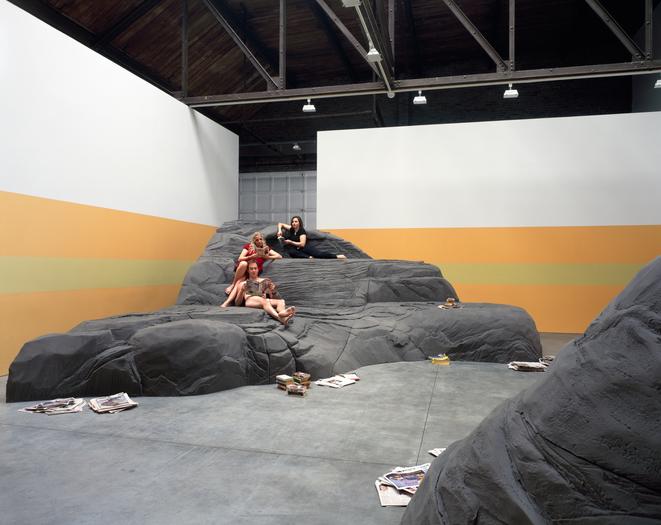Andrea Zittel
May 28 – July 17, 1998
Main Gallery
Although RAUGH is pronounced "raw", it doesn't necessarily mean the same thing! While "Raw" suggests a more natural or original state, "RAUGH" on the other hand actually means the way that something becomes "undone" over time and as the result of repeated lived experience. Our house is really RAUGH these days and it feels great!
This exhibition will mark the beginning of a new body of work exploring "RAUGH".
The "Rules of RAUGH" include:
• Absolutely comfortable
• Absorbs dirt rather than reveals it
• Deteriorates beautifully
• Doesn't require an "expert" to make it
• Not as tame as "Natural"
• Not as complicated as "Minimal"
… makes something fabulous out of almost nothing at all
At the center of this exhibition are The A-Z's new line of RAUGH living environments: large, soft sculpted seating arrangements that look like grand rock formations that are reminiscent of zoo environments with artificial caves and ledges. The untreated foam follows all of the rules of RAUGH. From a distance they look like realistic granite formations, but upon a closer viewing look rough, like the raw foam that they are made from.
The beauty of RAUGH is that it relies on the delicate sophistication of our own evolved social codes that we use to identify and contexualize design: furniture, architecture and clothing. A few years ago I read an anthropological study describing how sitting in a chair is actually not the most anatomically comfortable resting position for the human body. But because of social codes (Egyptian rulers sat in chairs, which meant that they had special status) we all think that chairs are just fine. The sense of correctness remains but the moral and social content/intent has been forgotten.
One of the reasons so many of my earlier designs kept referring back to modernism is because I was really impressed by how this movement led to a whole new way of deciding the value of things. The modernists labeled "good design" by relating it to a code rather than to specific material qualities (like the rarity of a material or extensiveness of hand labor) Once white walls and simple functional interiors of homes suggested the owner was poor but by associating these qualities to an ideological code, they were reinterpreted to indicate refinement and sophistication.
RAUGH is a continuation of A-Z's interest to create objects that bring into focus our desire for meaning and our assumption that with each new ideology – or revisited ideology, a sense of authority is created – always addressing the questionable but hopeful assumption that "new" is linked to progress.
-Andrea Zittel

